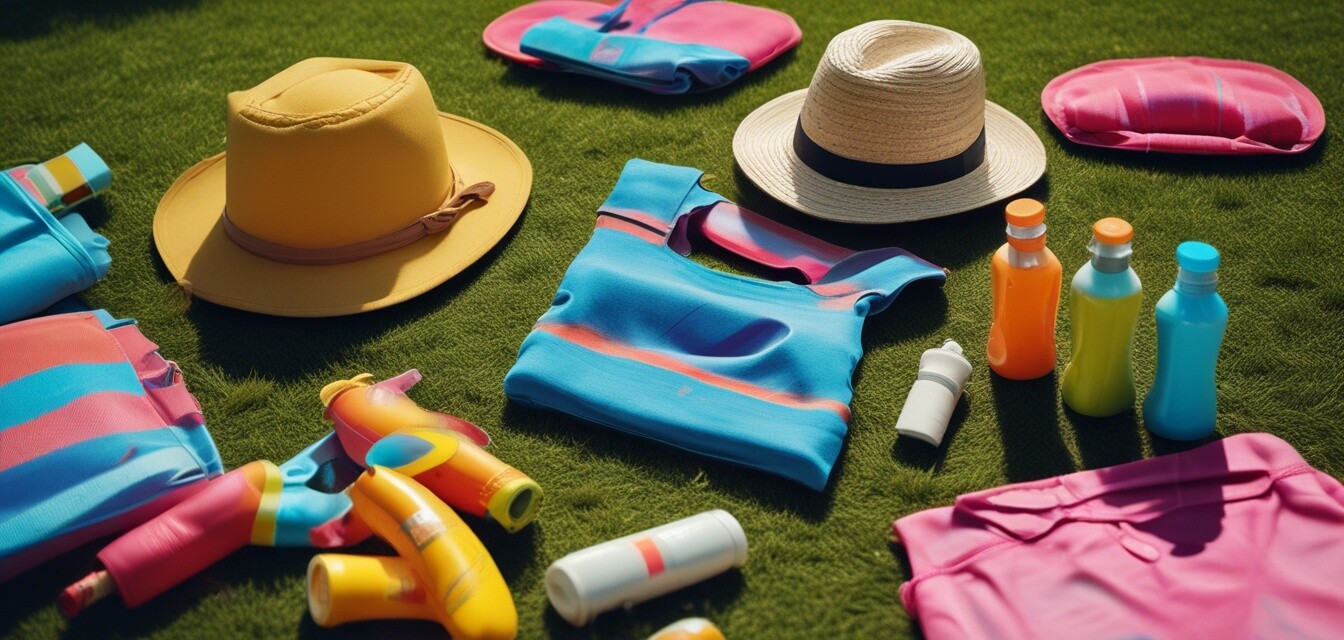
Educating kids about sun safety and UV protection
- Understanding sun exposure risks is essential for children.
- UV protective clothing offers consistent sun protection.
- Involving kids in sun safety education makes it fun and memorable.
- Creating a habit of wearing sun protective gear helps instill lifelong routines.
- Hands-on activities and discussions promote awareness and responsibility.
As the sun shines brightly during outdoor play, it’s important to teach kids about sun safety and the significance of wearing UV protective clothing. With increasing rates of skin-related issues linked to sun exposure, education is key. This article provides practical strategies for engaging children in conversations about UV protection while making learning enjoyable.
Why is sun safety important for kids?
Children's skin is particularly sensitive to UV rays, making them more susceptible to sunburn and long-term skin damage. Understanding the risks associated with prolonged sun exposure is crucial. Here are some reasons why sun safety should be a priority:
- Skin damage is cumulative; early exposure can have lasting effects.
- Children with fair skin or certain medical conditions are at greater risk.
- Prolonged exposure can lead to increased chances of skin cancer later in life.
How UV protective clothing works
UV protective clothing is designed to block harmful rays from reaching the skin. Unlike regular clothing, which may only provide minimal UV protection, UV-rated garments typically have a Ultraviolet Protection Factor (UPF) of 30 to 50+. Here’s how it provides protection:
| Attribute | Regular Clothing | UV Protective Clothing |
|---|---|---|
| UPF Rating | 5 - 10 | 30 - 50+ |
| Water Resistance | Variable | Often included |
| Moisture-Wicking | Rare | Typically featured |
Strategies for teaching sun safety
Here are some fun and effective ways to educate kids about sun safety:
1. Make it a game
Turn learning into a fun activity. Organize games where kids earn points by identifying UV protective clothing or correctly answering questions about sun safety.
2. Use visuals
Bring the concept of UV protection to life with colorful charts, diagrams, or even videos showing the dangers of sun exposure. Visual aids can make the learning process engaging.
3. Involve them in choosing their clothing
Take your children shopping for UV protective clothing. Let them pick out their outfits, explaining the importance of sun protection while making choices.
Practical activities for sun safety education
Activities can reinforce the importance of sun protection in a hands-on way. Here are some suggestions:
- Conduct a “sun safety challenge” where kids can track their habits and see who does the best at wearing protective clothing over a week.
- Set up a DIY sunscreen-making station to learn about how sunblock works.
- Take group outings to the park with everyone dressed in UV protective clothing, reminding each other about sun safety throughout the day.
Creating a sun safety routine
Just like brushing teeth or wearing a helmet while biking, wearing sun protective clothing should be a regular part of a child's routine. Here are steps to create lasting sun safety habits:
- Have kids pick out their UV protective outfits the night before outdoor activities.
- Incorporate sunscreen application as part of the morning routine.
- Use reminders such as charts or stickers to encourage consistency.
Tips for Sun Safety Education
- Teach kids to recognize shade and make use of it during outdoor play.
- Encourage them to wear hats and sunglasses as additional protection.
- Communicate the importance of hydration during sunny outdoor activities.
Conclusion
Educating kids about sun safety is a vital step in ensuring their long-term well-being. By incorporating sun safety into their daily routine and making the learning process interactive, you’ll empower them to take charge of their health. With increased awareness, children can enjoy their outdoor activities while remaining protected against harmful UV rays. For more sun safety tips, check out our Health and Safety Tips section.
Pros
- Empowers children with knowledge about health.
- Makes outdoor play safer and more enjoyable.
- Instills lifelong habits of sun protection.
Cons
- Requires consistency and reminders from parents.
- Potential resistance from kids initially.